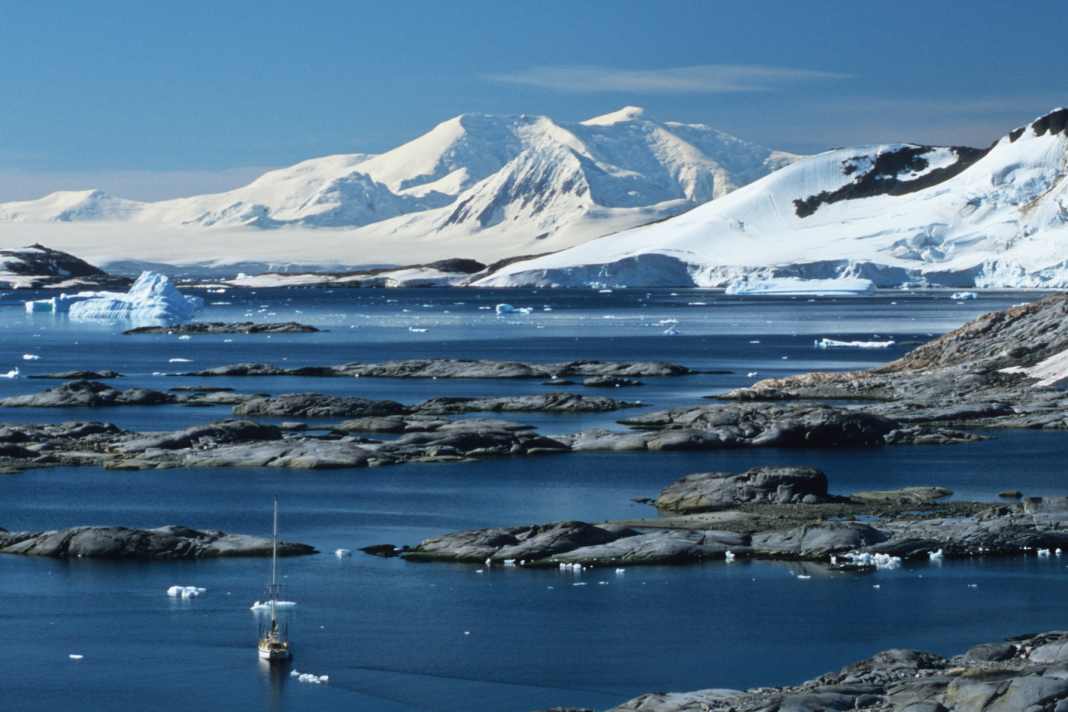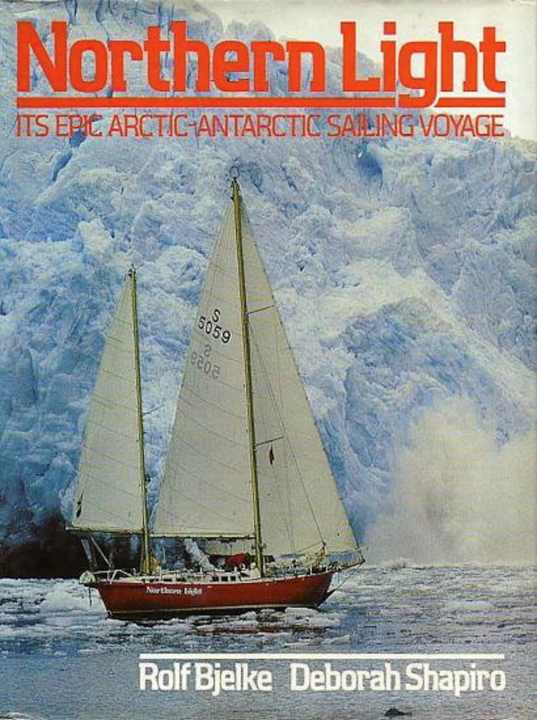




It is difficult to say exactly when Antarctica became "mentally" accessible to us as a sailing destination. Perhaps through the voyages of the British Bill Tilman on "Mischief" and the Frenchman Jérôme Poncet on his "Damiens". Both were sailing pioneers in the Antarctic in the late sixties and early seventies. Likewise David Lewis with his single-handed voyage on "Icebird" and Gerry Clark with his crazy circumnavigation of Antarctica on "Totorore" - even if we hardly remember their names and voyages almost half a century later.
They were delicate, risky ventures into a hostile ice world. Into a remote area where the outcome was unknown. Without a safety net, without weather forecasts, usually without radio contact. And without GPS. In the last century, they also sailed into a media black hole. If anything came out of it at all, it was only with a time delay and in the very old-fashioned form of a book. This, in turn, had many words but few photographs, as was appropriate.
Also interesting:
The rare reports of all the lone adventurers did little to change the fact that at the time, sailing to Antarctica as a couple was not something that crossed anyone's mind. That changed when Rolf Bjelke and Deborah Shapiro - he Swedish, she American - appeared on the polar horizon in the early 1980s. In English, but also in German-speaking countries, it was their 1986 book about their journey from the Arctic to the Antarctic on their 40-foot steel ketch "Northern Light" that broke the ice for sailing in the high latitudes. Because this book was different; it didn't just have text, but an equal proportion of photos. These almost always focussed on the impressive "Northern Light", which stood out in red.
Care even for short distances
These images evoked something in us that lay below the level of reason. They drew us into themselves and thus into a deserted wilderness that was still frozen inside us. Since then, for more than 30 years, Rolf and Deborah's numerous trips to polar regions have set the standard for anyone who wanted to do the same.
The news of Rolf's death makes me think back to my silent self-consciousness when I first met him and Deborah in 1986, shortly after their book was published. I was living on "Wanderer III" and working as a wooden boat builder in Risør, Norway. One of the first Risør Trebåtfestivals had given them a reason to interrupt preparations for their next endeavour - a wintering in the Antarctic. They had travelled over from Fiskebäckskil on the Swedish west coast.
What struck me at the time was the care with which they washed, folded and stowed their dinghy. In such a calm, methodical, almost meticulous way, even for just 60 nautical miles across the Skagerrak in summer. I realised that if this was my approach to a trip to Antarctica, I had a lot to learn.
Three years later, my lessons continued on the US East Coast. In the December freeze on the Intracoastal Waterway in North Carolina. Completely unexpectedly, "Wanderer" and "Northern Light" had met in waiting mode in front of a lift bridge near Norfolk, Virginia. From there, we followed a common route southwards in a rhythm that I found magical.
For five unforgettable days, I set off early in the morning ahead of them, as I was on the slower boat. At some point during the day, they overtook me and chose a spot for the night where I anchored next to them and rowed over to them. Dinner was usually already simmering by then. Every single one of these evenings filled me with the details of Antarctic sailing. Their experiences in the ice, the pros and cons of specific boat details and rigs, storm tactics in the Southern Ocean for yachts with a long lateral plan, plus photography, writing, chocolate, wine: all this and more was on the table.
This continued until our courses diverged. They headed for Antarctica to spend the winter there. I sailed to the Caribbean to meet Kicki. Not that I knew it at the time, but during those five days Rolf and Deborah had become godparents to my future sailing.
Bjelke and Shapiro share an eye for detail
I liked her "Northern Light" straight away, both her looks and her well thought-out, functional strength. Her hull shape is identical to Moitessier's "Joshua", but it is her powerful rig that makes her nothing less than an aesthetically pleasing sailing machine. She was also their home, optimised almost to perfection to spend long periods in the very places where nature becomes truly inhospitable. Their love of the world's wildernesses was as great as their love of sailing. Only very few of us manage to live this love and weave it into a lifelong bond, pulling in the same direction as a couple.
They shared qualities such as their attention to detail, their foresight in planning and their organisational skills. But what stands out is something else: the way they approached the challenges on and off the sea. It is the deliberate parity and absolute equality in everything they did that was so extraordinary - navigating, deck work, boat maintenance, photography, filming, writing and - ahead of their time - presenting the first multimedia shows. Their sailing earned them the Blue Water Medal in 1984, their filming a festival award in Cannes, their multimedia presentations the admiration of countless sailors worldwide.
17 years after the evening lessons on the Waterway, my apprenticeship was over. Deep in the southern hemisphere, one moment I was watching a Royal Albatross and the next I recognised a red ketch in the distance next to "Wanderer". I could hardly believe it, it was definitely "Northern Light". Kicki and I had long been at home sailing in the cold. But to come across Rolf and Deborah as the only other yacht in the New Zealand sub-Antarctic Auckland Islands was special. In terms of the equipment on both boats, "Wanderer" seemed less suitable for these regions, but none of the four of us had any doubts.
Ultimate balance between planning and playing
Decades of sailing had taught us how important it is, especially in places like this, to give each other space to feel exactly what we had come for: to find ourselves in a primeval world of natural sounds and dominating winds, to feel where we are. And yes, also to come together, share dinner or enjoy Deborah's birthday cake for Kicki. Both came naturally to us. Because the social and the distant had levelled out on exactly the same wavelength for everyone.
When we visited Rolf and Deborah in Sweden last year, "Northern Light" had long since been sold and Rolf was 86 years old. His body no longer wanted to be like him, but his mind was as sharp as the freshly frozen ice of the first days of their Antarctic wintering in Hovgaard Bay. His determination, resolve and clarity were undiminished. They had guided his life, just as in other ways the magic of the never-setting light of a polar summer night had.
It was in Hovgaard Bay in 2007, where we had last seen each other, when the two of them had returned to their favourite place for a few summer months on their final sailing project, a circumnavigation of the Southern Ocean with stops on the sub-Antarctic islands.
Among their extraordinary photos from the time they spent the winter there, they choreographed one that expresses the essence of their sailing better than any other: it shows "Northern Light", gripped and held by the whitest snow, all sails set, the spinnaker wind-filled, in the midst of a light-drenched stage set of a peaceful Antarctic landscape. For years, it hung as a poster at maritime ship chandlers, sailmakers and riggers all over the world.
Once you had seen this photograph, it penetrated you and never left you. Not even me. The two of them had found the ultimate balance between planning and playing. Rolf died at the age of 87 on the day of the summer solstice - the day when the sun shines at its fullest at the ends of our world. Thank you, Rolf, and thank you, Deborah, for guiding me on my path.
The book for the epic journey

Rolf Bjelke and Deborah Shapiro have documented their journey to the polar regions. The book is available second-hand for around 25 euros.

